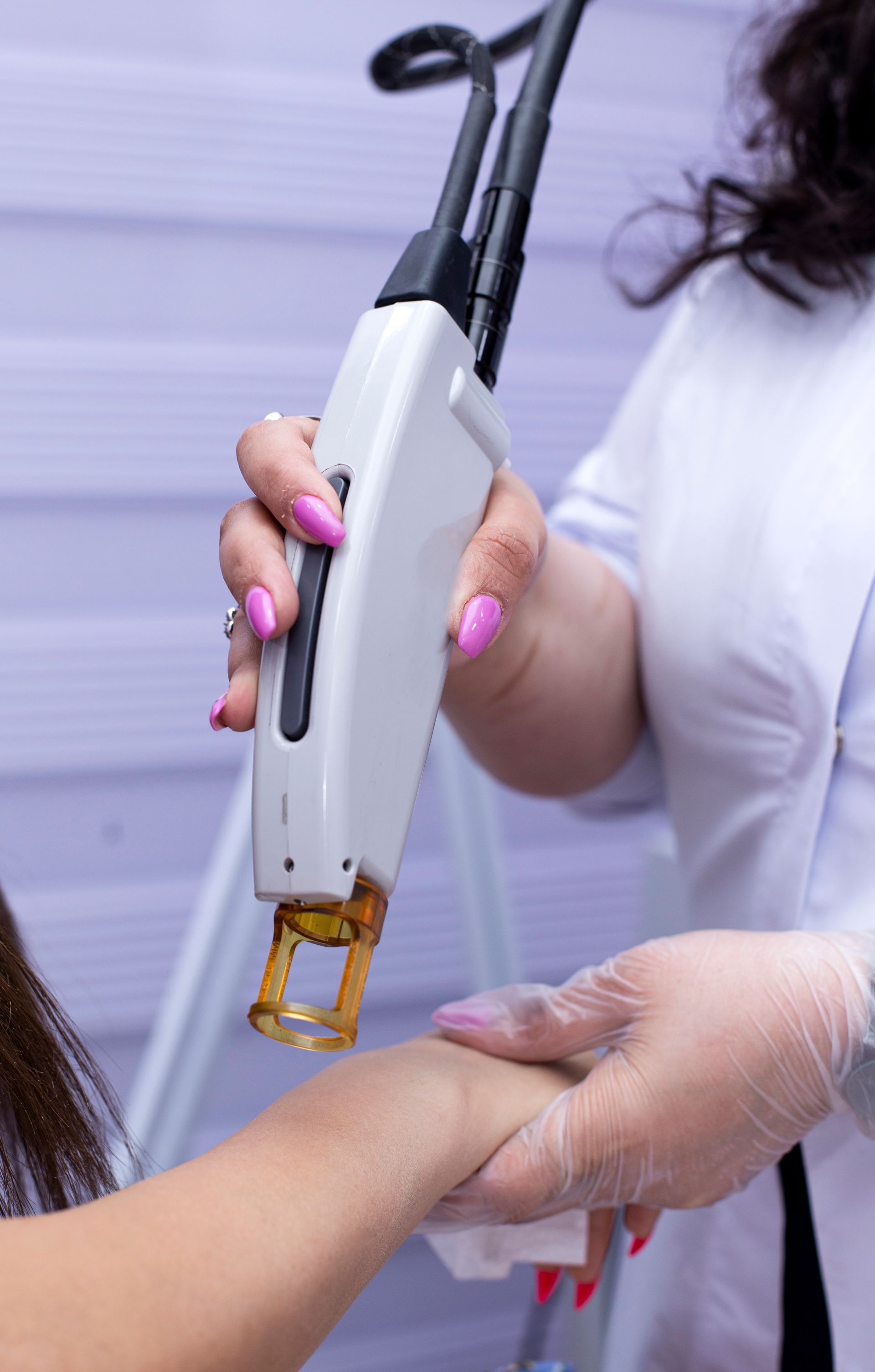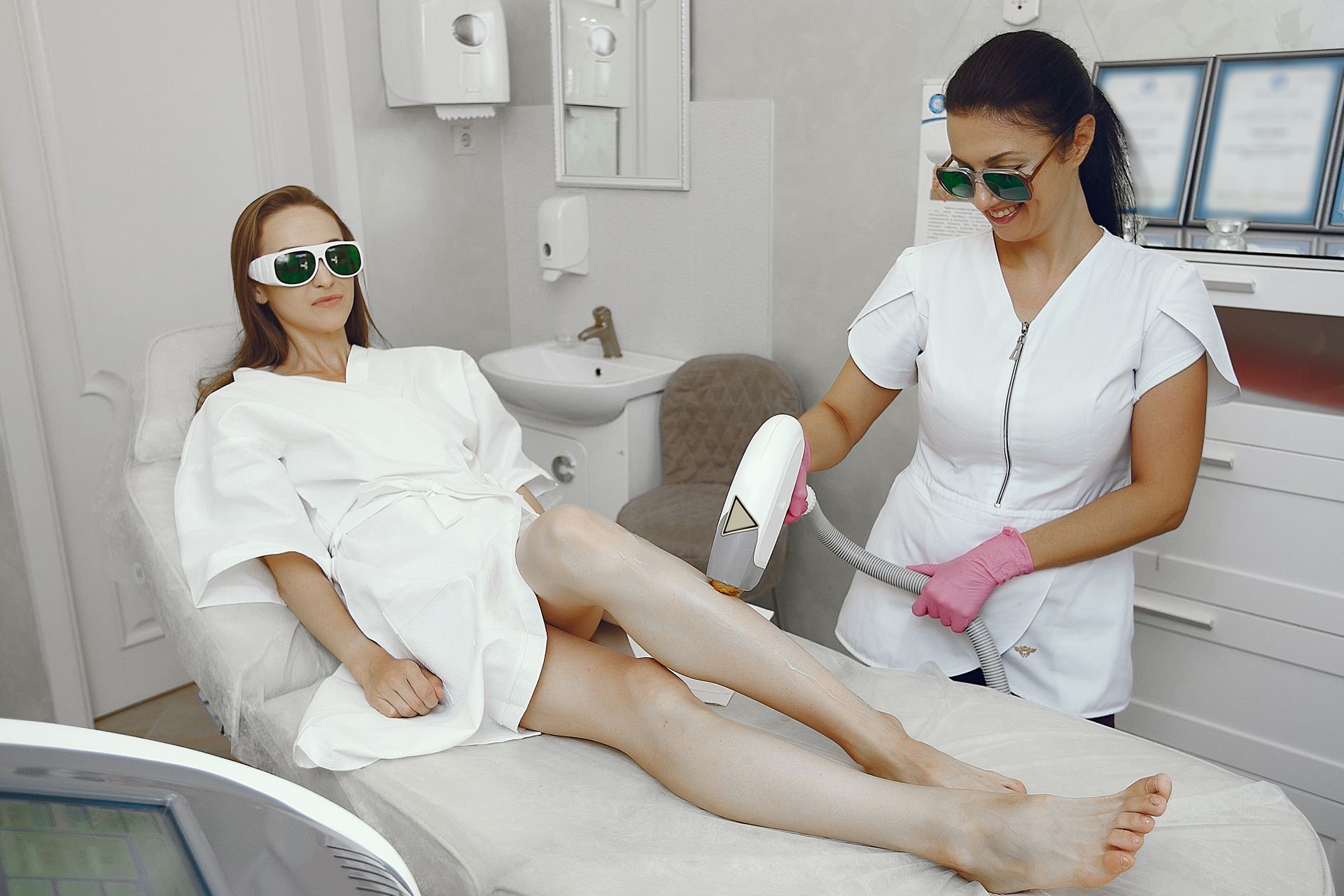Laser Hair Removal vs. Epilators: Long-Term Results Compared
Unwanted hair — we all deal with it. Whether it’s on your legs, arms, or face, the endless cycle of removing it can be exhausting. That’s where tools like laser hair removal and epilators come in. Both claim to offer long-lasting smoothness, but the reality of how they work — and how long the results last — is quite different.
So, if you’ve been wondering whether to invest in laser treatments or stick to your trusty epilator, this guide will help you understand which method actually wins in the long run.
Laser Hair Removal vs. Electrolysis: Which Is Better?
How Each Method Works
Laser hair removal uses focused beams of light to target and damage the hair follicle at its root. The laser detects the pigment (melanin) in your hair, heats it, and prevents it from growing back. Since not all hair is active at once, several sessions are needed — typically six to eight spaced weeks apart — to catch hair in different growth phases. The result is long-term, often permanent, hair reduction.
Epilators, on the other hand, work mechanically. They use a set of rotating discs or tweezers that pluck hair from the root. It’s a more advanced version of tweezing, pulling out dozens of hairs at once. The result? Smooth skin for a few weeks — until the next growth cycle begins. While it removes hair effectively, the follicle remains intact, meaning hair will eventually grow back.
Effectiveness and Results Over Time
Laser hair removal is known for its lasting results. After your first few sessions, you’ll notice your hair growing back slower and finer. By the sixth session, most people experience up to 80–90% permanent reduction in treated areas. Once your course is complete, you may only need an occasional maintenance session once or twice a year.
Epilators, in contrast, offer temporary smoothness. Since the root isn’t destroyed, regrowth is inevitable, typically after two to four weeks. However, consistent use can lead to finer and softer hair over time. While that’s a small improvement, it’s far from the long-term reduction laser treatments achieve.
Pain and Comfort Level
Let’s be real — neither option is completely painless. With laser hair removal, you’ll feel a mild stinging sensation, often compared to a rubber band snapping against your skin. However, advanced machines include cooling technology that makes the experience more tolerable. And the best part? The discomfort lessens with each session as the hair becomes thinner.
Epilating, especially for beginners, can be quite painful. The first few times feel like hundreds of tiny tweezes happening at once. Over time, as hair weakens, the discomfort eases — but for large or sensitive areas, it’s definitely not a relaxing experience.
Cost and Time Investment
Laser hair removal requires an upfront investment, but it pays off over time. Depending on the size of the area, each session can cost between $200 and $400, and most people need around six to eight sessions. While that might sound pricey initially, think of all the money you save on waxing, razors, and depilatory creams down the road. After your treatment plan, you’ll hardly need touch-ups for years.
Epilators are a budget-friendly option, usually costing between $50 and $200 for a one-time purchase. However, you’ll need to use them regularly, often every few weeks. Over time, you’re investing more hours than money — which is fine if you’re consistent and patient. But if convenience matters to you, laser quickly becomes the smarter, time-saving choice.
Convenience and Maintenance
Laser hair removal is the ultimate low-maintenance solution. Once your treatment sessions are done, you can enjoy smooth skin with minimal effort. There’s no need to remember weekly routines or deal with razor burn ever again.
Epilators, while easy to use at home, demand frequent upkeep. You’ll need to stay on top of your regrowth cycles and set aside time for regular sessions. The process can also be messy if you’re working on larger areas like legs or arms.
Skin Sensitivity and Side Effects
Both methods are generally safe when used correctly, but they affect the skin differently.
Laser hair removal may cause mild redness or swelling immediately after treatment — this usually subsides within a few hours. The skin can also be temporarily more sensitive to sunlight, which is why sun protection is crucial before and after your sessions. Serious side effects are rare, especially when performed by trained professionals using the right laser for your skin tone.
Epilators can lead to redness, irritation, and ingrown hairs if the skin isn’t exfoliated regularly. Some people also experience small bumps or folliculitis. Proper hygiene, exfoliation, and moisturizing can help prevent these issues, but they do require consistent care.
Can You Workout After Laser Hair Removal? (Gym & Sweat FAQs)
Results Longevity: The Real Difference
Here’s where the difference between laser and epilators truly stands out.
Laser hair removal offers long-term freedom from regrowth. Once the follicles are disabled, they stop producing hair — or grow only fine, barely visible strands. For many, this means smooth skin for years with just minimal touch-ups.
Epilators, by comparison, don’t affect the follicle’s ability to regrow hair. The hair will come back, often finer, but it’s a repetitive cycle that continues indefinitely. You’ll enjoy short-term smoothness, but never full elimination.
Safety and Skin Type Compatibility
Laser hair removal used to be ideal only for people with light skin and dark hair, since the laser targets pigment. However, modern advancements like Nd:YAG and diode lasers now make it safe for darker skin tones as well. It’s still important to get treated by a licensed professional who understands how to calibrate the laser properly for your skin and hair type.
Epilators, on the other hand, work for all skin and hair types since they don’t rely on pigment. But for people with sensitive skin or conditions like eczema, frequent use can trigger irritation or inflammation.
Maintenance and Aftercare Tips
After laser hair removal, the key is to keep your skin cool, clean, and protected. Avoid hot showers, workouts, or direct sun exposure for 24–48 hours. Use soothing gels like aloe vera and stick to gentle, fragrance-free moisturizers.
For epilation, the focus should be on exfoliation and hydration. Regular exfoliation helps prevent ingrown hairs, while lightweight moisturizers calm the skin after each session. Avoid applying heavy lotions immediately before epilating, as they can clog pores.
Environmental and Lifestyle Impact
From a sustainability perspective, both methods can reduce waste compared to disposable razors and wax strips. However, laser hair removal stands out for its long-term environmental benefit. Fewer products, less packaging, and minimal lifetime energy use make it an eco-conscious choice for the future.
Epilators are reusable and durable, which makes them environmentally friendly too — but their frequent use and maintenance can still generate more waste over time compared to a completed laser course.
Which One Should You Choose?
If you’re looking for long-term results, minimal effort, and a major confidence boost, laser hair removal is worth the investment. It’s perfect for anyone tired of constant upkeep and seeking a nearly permanent solution.
If you prefer something affordable, portable, and easy to use at home, an epilator might be the better fit. It’s ideal for people who don’t mind regular maintenance and can handle a little discomfort for quick results.
Ultimately, the right choice depends on your priorities — whether it’s cost, convenience, or the promise of long-lasting smoothness.
Final Thoughts
Epilators give you instant gratification — smooth skin in minutes — but it’s temporary. Laser hair removal, while requiring patience and investment upfront, offers something far better: the freedom of waking up every day with effortlessly smooth skin.
So if you’re ready to break the cycle of constant shaving, waxing, or epilating, laser hair removal might just be the upgrade your self-care routine needs.
BOOK YOUR FREE SESSION










